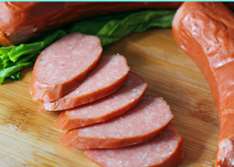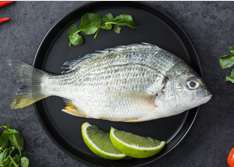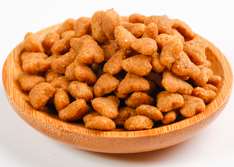Can "Artificial Meat" Replace Traditional Meat?
Release Time:2019-05-22 14:18:53
Hits:
According to media reports, Japan's University of Tokyo and a food company recently announced that they have successfully used bovine muscle cells for the first time to produce massive "artificial beefsteak".
Can meat be "artificial"? This is strange to many people. However, in recent years, "artificial meat" is indeed one of the hot topics in scientific research. Prior to this, researchers in some countries developed "artificial meat", but most of it was minced meat. The goal of this Japanese research project is to artificially cultivate massive muscle tissue and let people make beefsteak with the taste of beef itself.
So, can "artificial meat" really be eaten by human beings? Will it be able to supplement human consumption demand for meat in the future or even become a substitute for traditional meat completely?
More than 1 was obtained from cultured cells in vitro.
According to the research team of the Institute of Production Technology of the University of Tokyo and the food company, vitamin C was added to bovine muscle cells during the cultivation process, and mature bovine muscle cells were successfully cultivated. The research team also adopted a special three-dimensional culture method to cultivate slender muscle tissue, and then through a special method to cultivate multi-layer muscle tissue to produce massive muscle with a growth of 1 cm, a width of 0.8 cm and a thickness of 0.7 cm. This work is the first step towards the cultivation of "artificial beefsteak" with beef's own taste.
Researchers believe that with the increase of population and the improvement of living standards, the global demand for meat will continue to increase, and the environmental burden of raising livestock will be great. "Artificial meat" is obtained from cultured cells in vitro, which has little impact on the environment and can be produced under strict sanitary supervision. It is expected to become a substitute for traditional meat in the future.
It is too early to say whether "traditional meat can be replaced", but we can know what "artificial meat" is.
"Artificial meat" is actually divided into two kinds. The first is vegetarian meat, which is processed from vegetable proteins such as soybeans and is a variety of foods produced from bean products, which is very popular among vegetarians in various countries. The other is similar to real animal meat, which is made from animal stem cells. The general process is to culture stem cells from amino acids, sugar, grease and other substances in containers so that the meat can slowly "grow up". The "artificial meat" now generally refers to this kind of meat cultured by stem cells, whether it is beef, pork or chicken.
"Artificial meat" is not a new thing. Some people put forward this idea as early as the end of the 20th century. It was only in 2013 that it became a reality. Mark poster of Maastricht University in the Netherlands showed the "artificial meat" developed by his research team to the public for the first time. They first extract stem cells from live cattle, then put the stem cells into a vessel with nutrient solution to cultivate muscle tissue, and finally form muscle fibers. However, the "artificial meat" developed by Post's team is not like real animal meat. The latter is lumpy and may be connected with bones and tendons, while the former is only some minced meat, which is neither fresh meat and meat slices available in the market, nor fresh and juicy to eat. Some tasters call the meat "animal protein cake".
Nutrition and taste are the "key problems"
The nutrition of meat in nature is mainly reflected in protein and fat. Protein and its rich amino acids are necessary for human nutrition. There are 22 kinds of amino acids needed by human body, and 8 kinds of amino acids cannot be synthesized by human body, such as threonine, tryptophan, leucine, lysine, etc., which need to be obtained from food. Meat contains exactly these 8 amino acids, which is also an important reason why humans choose to eat meat, making it an important reason for human evolution and maintenance of life functions.
In addition, the smell of meat can stimulate people's appetite, which is not only a kind of enjoyment of eating, but also conducive to health. The flavor of meat depends on two elements: the specific substances in meat and the heating reaction in cooking. Amino acids such as glycine, alanine, cysteine and glutamic acid in meat have the function of making food produce fragrance. For example, the sulfur amino acids, cysteine, cystine, glutathione, etc. contained in beef are precursor compounds that make beef produce aroma. Through cooking and heating process, perfect original meat flavor can be obtained.
Whether "artificial meat" will produce such real meat flavor and nutrients, and whether there is any real meat taste, such as fiber hardness, humidity, tenderness, etc., is still unknown.
In theory, the success of "artificial meat" cultivation is affected by many factors. First, the nutrition and taste should be the same as or similar to the meat of animals raised in animal husbandry. Second, the economic cost of cultivation should be equal to or lower than that of traditional meat, which also means that technological innovation is needed. The third is to solve people's psychological discomfort when eating.
In view of the fact that many research institutions have previously said that "artificial meat" is produced using stem cells, this shows that the production of "artificial meat" is similar to bioengineering. The complexity and difficulty of bioengineering lies first in that if stem cells are to grow, genes encoding muscles need to be activated.
There are many such genes, and the regeneration mechanism of some animals can be a clue to the growth of "artificial meat". For example, salamanders can grow new legs after their legs are broken, geckos can grow tails after their tails are broken, and planarian jellyfish can grow whole bodies after being cut into two pieces. For example, Mancie srivastava, an evolutionary developmental biologist at Massachusetts Institute of Technology, discovered a "master gene" called early growth response (EGR). Once the EGR gene switch is activated, it can regulate other genes and turn on or off many physiological processes, including regeneration of biological organs and tissues.
3 New Exploration of Emission Reduction Methods
Today's human beings still cannot leave the traditional animal meat, because "artificial meat" cannot replace the meat of livestock-raising animals at present in terms of both the nutrition and taste of meat. But there is no doubt that "artificial meat" is one of the new ways to deal with and solve food security.
Statistics from the Joint Food and Agriculture Organization (FAO) show that the world's pork output in 2016 will be 108.2 million tons, of which China, the European Union (27 countries) and the United States will account for 79.95% of the world's pork output. At the same time, global beef production is 58.74 million tons, with US beef production accounting for the largest proportion of global beef production at 19%.
According to FAO's calculation results, beef production is the first in all aspects of consumption. For example, it takes 10 kilograms of grain to produce 1 kilogram of beef. It takes 4-5.5 kg of grain to produce 1 kg of pork. Production of 1 kg of chicken and duck meat requires 2.1-3 kg of grain. However, beef production occupies 29 times as much land as pork and chicken production, and its water consumption is 11 times more. Overall, producing the same amount of beef will emit 11-15 times more greenhouse gases than pork. According to FAO's more rigorous data, producing 1 kg of beef is equivalent to emitting 36.4 kg of carbon dioxide, and producing 1 kg of pork emits at least 3.3 kg of carbon dioxide.
According to these situations, FAO has proposed actions to reduce emissions from animal husbandry. This is because 45% of the greenhouse gases emitted by the livestock industry are from the production of feed, while 39% are from animals. It can be understood that if "artificial meat" can be produced to replace part of livestock meat, greenhouse gas emissions can be greatly reduced, at least the production of "artificial meat" will not use feed, and land and water will be reduced accordingly.
Some organizations and enterprises are deeply convinced of the environmental protection prospect of "artificial meat". In 2008, PETA, a world-renowned animal rights organization, invested US$ 1 million to reward the first company that "successfully" put artificial chicken into the market. In the same year, the Dutch government also funded the experiment of "artificial meat" with US$ 4 million. However, perhaps due to technical difficulties, these investments have not yet seen more significant results.
Can it be healthier and cheaper?
When "artificial meat" was accepted by the general public and entered the common people's homes, scientists have no definite conclusion, but its benefits are obvious. At present, it can be predicted that "artificial meat" is greener and safer than traditional meat, thus fundamentally preventing the spread of many zoonotic diseases and animal epidemics, such as mad cow disease, foot-and-mouth disease, African swine fever, etc.
Of course, when "artificial meat" is cultivated, because cells are cultured in vessels, it is also susceptible to various microorganisms, such as yeast and mold contamination. Therefore, the possibility of using antibiotics or other drugs and additives is not excluded. There is also a need for a solution to this problem.
Another thing that can be predicted is that when "artificial meat" is produced, more nutritious and healthier meat can be produced according to human needs. For example, meat containing healthy omega-3 fatty acids can be produced to replace meat that is prone to high cholesterol. The theoretical method of operation is to use fish stem cells to produce omega-3 fatty acids, and then combine this substance with beef and pork cultured in the laboratory to produce beef and pork that have the taste of fat meat without causing hyperlipidemia and coronary atherosclerosis. However, such a method requires testing before a final answer can be obtained.
In addition, whether the cost performance and cost of "artificial meat" are better than those of traditional meat, whether the technology is mature enough for mass production, and whether its advantages in protecting the environment can be reflected need further scientific research to confirm.
Many research institutions are developing and producing "artificial meat" and the relevant technologies are highly confidential. What is certain is that "artificial meat" will become a normal food in human reality, which needs further research and exploration. We can wait and see.










.jpg)
.jpg)
.jpg)
.jpg)
